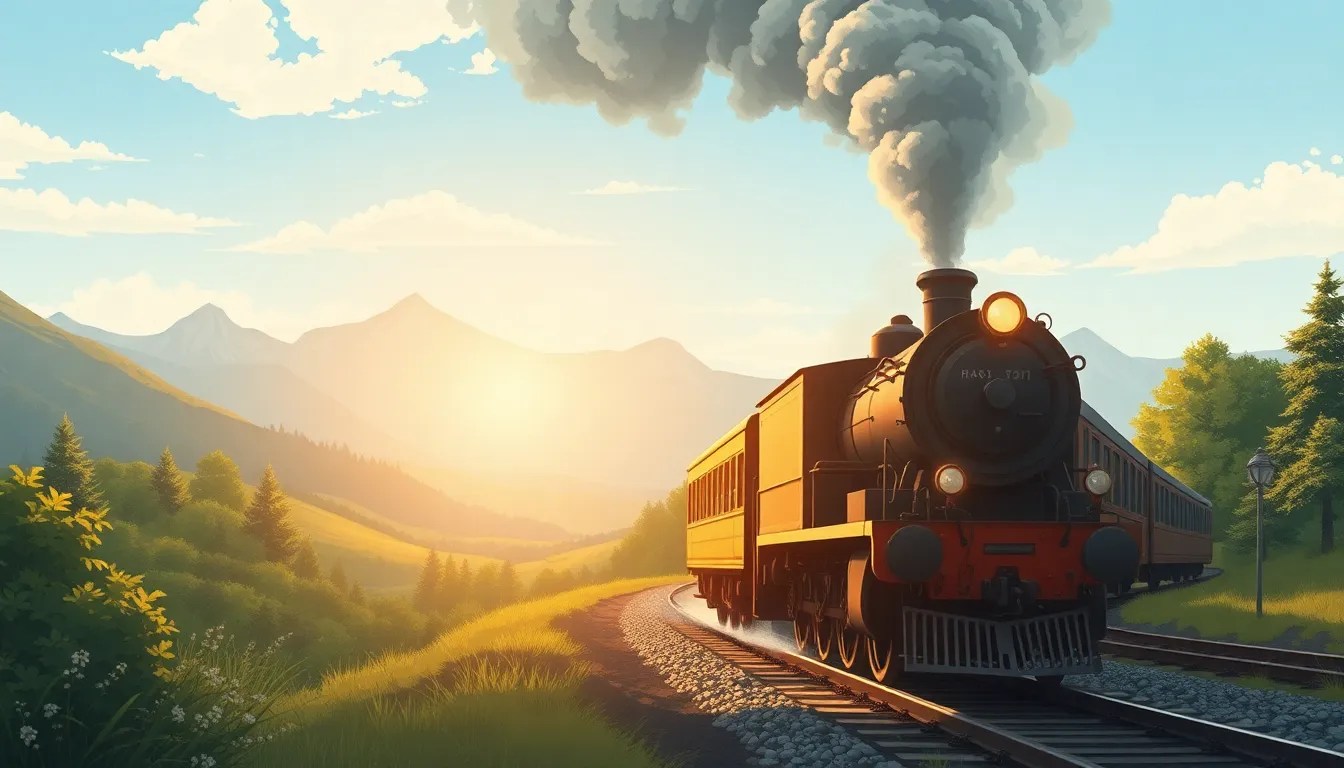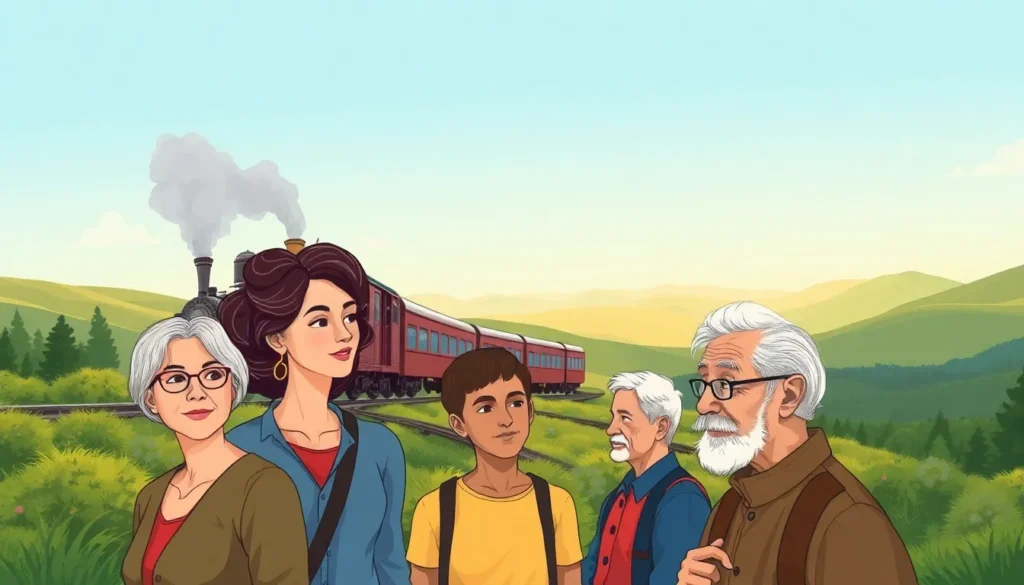Imagine stepping onto a train that’s been traveling through time for 28 years. That’s right, it’s not just a ride; it’s a journey back to the moments that defined a generation. The train scene, once a cinematic marvel, has evolved into a nostalgic treasure trove, packed with memories and a touch of humor.
Overview of the Train Scene
The train scene serves as a powerful metaphor for nostalgia, evoking memories from the past 28 years. Significant moments from the cinematic journey resonate deeply with audiences, highlighting key experiences that shaped a generation. Visual imagery showcases trains as symbols of progress and change, illustrating how life’s transitions mirror the motion of trains.
The evolution of this scene reflects greater thematic developments over decades. Characters experience personal growth, reflecting societal changes. Humor often intertwines with poignant moments, offering both levity and depth. Emphasizing this contrast engages viewers, prompting them to reflect on their own journeys.
The charm of the train scene lies not only in its visual appeal but also in its emotional resonance. Trains move through varying landscapes, embodying phases of life that everyone experiences. The interactions among characters further contribute to the richness of this experience. Each conversation adds layers to the narrative, allowing audiences to connect with their own stories.
Legacy plays a role in shaping perceptions of the scene. References to the train evoke early cinematic elements, enriching the contemporary narrative experience. Important symbols, such as departure and arrival, manifest throughout the scene, underscoring themes of journey and transformation. This consistent focus keeps viewers engaged while inviting them to explore their own pasts.
Overall, the train scene represents a blend of humor, nostalgia, and profound storytelling. Each passage invites contemplation, ensuring lasting impressions that extend beyond the screen. Audiences continue to cherish this scene, preserving its significance for years to come.
Impact on Film and Culture

The train scene’s influence extends beyond the screen, shaping cinematic language and cultural expressions. Its rich symbolism and emotional depth resonate with audiences, defining nostalgic connections across generations.
Legacy and Influence
The train scene’s legacy includes its role in establishing a template for storytelling. Directors have drawn inspiration from its emotional landscape, crafting narratives that mirror personal growth and societal change. Numerous filmmakers credit this iconic scene with teaching them how to balance humor and poignancy. Characters traversing landscapes symbolize life’s phases, encouraging audiences to reflect on their journeys. This prominent use of trains as a storytelling device influences contemporary cinema, promoting engagement through relatable experiences. Innovative techniques employed in the scene encourage experimentation, fostering creativity in scriptwriting and direction.
References in Popular Media
The train scene appears frequently in popular media, serving as a touchstone for nostalgia. Television shows often replicate its emotional depth, incorporating similar themes of departure and arrival. Numerous films reference elements from the original scene, enhancing their narratives through familiar connections. Music videos have included train imagery to evoke emotional responses, tying together sound and visual storytelling. Social media platforms witness tributes to the train scene, showcasing its lasting impact across generations. Artists and creators consistently reference this iconic moment, emphasizing its relevance in both film and broader cultural contexts.
Analysis of the Train Scene
The train scene serves as a canvas for storytelling enriched by various cinematic techniques and character development.
Cinematic Techniques
Cinematographers utilize dynamic camera movements to enhance the emotional weight of each moment. Close-ups reveal subtle expressions, drawing viewers into characters’ inner conflicts. Lighting shifts accentuate mood changes, creating an atmosphere that mirrors the narrative’s tone. Sound design plays a crucial role; the rhythmic clatter of train wheels evokes nostalgia while underscoring pivotal scenes. Editing choices contribute to pacing, blending moments seamlessly for maximum impact. Symbolic imagery, such as trains passing through diverse landscapes, resonates with themes of journey and transition, deepening audience engagement. Each element intricately layers the scene, crafting a multifaceted experience.
Character Development
Characters evolve significantly throughout the train scene, reflecting personal journeys that resonate with audiences. Their interactions reveal vulnerabilities and strengths, fostering deeper connections. Backstories unfold, providing context that enriches viewers’ understanding of motivations. Key moments of conflict lead to transformative realizations, showcasing growth in response to challenges. Relationships develop as characters face shared experiences, strengthening bonds and emphasizing themes of unity. The emotional arcs resonate, leading audiences to reflect on their own experiences. By mirroring real-life struggles and triumphs, the scene encapsulates the essence of character-driven narratives and enhances the storytelling impact.
Fan Reactions and Interpretations
Fans continue to share their interpretations of the iconic train scene, celebrating its enduring impact over the last 28 years. This appreciation captures the scene’s multifaceted emotional depth.
Nostalgia Factor
Nostalgia permeates discussions about the train scene. Many fans reflect on personal experiences that align with the journey depicted in the film. Viewers often cite childhood moments, linking their growth to the characters’ transitions. Shared memories of family gatherings or friendships evoke sentimentality. This connection reinforces how the scene resonates across generations. Audience members emphasize the power of the train as a metaphor for life’s inevitable changes. People frequently describe watching the scene as reminiscent of their own journeys, filled with bittersweet moments.
Modern Perspectives
Modern interpretations reveal how the train scene resonates differently with today’s audiences. New viewers analyze it through the lens of contemporary societal challenges, reflecting on themes of change and resilience. They articulate how characters inspire personal growth amidst uncertainty. The scene’s humor also garners appreciation for its relatability, providing a needed light-heartedness. Different generations engage with the narrative, expanding its relevance. Fans post theories on social media, discussing how the journey’s symbolism relates to current life experiences. Each interpretation adds layers to its significance, showcasing its timeless appeal.
The train scene continues to be a powerful symbol of nostalgia and personal growth. Its emotional depth resonates with audiences, inviting them to reflect on their own journeys. As it weaves humor with poignant moments, it creates a lasting connection that transcends time.
This iconic scene not only shaped cinematic storytelling but also left an indelible mark on popular culture. Its legacy endures through various media, inspiring new generations to explore themes of transition and transformation. The train scene remains a touchstone, reminding viewers of the beauty in life’s journey and the shared experiences that define us all.





